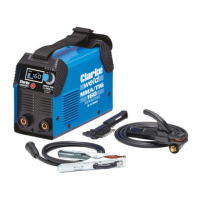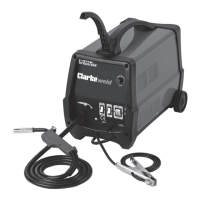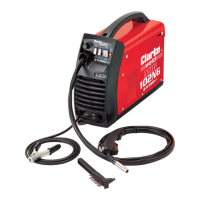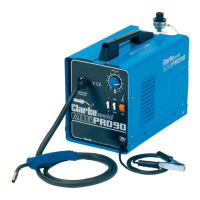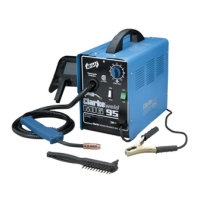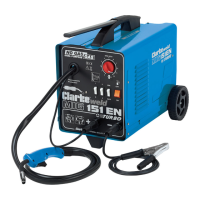12
Parts & Service: 020 8988 7400 / E-mail: Parts@clarkeinternational.com or Service@clarkeinternational.com
STRIKING AN ARC
IMPORTANT: BEFORE YOU STRIKE AN ARC, ALWAYS BRING THE FACE SHIELD UP
TO PROTECT YOUR EYES.
1. Line up the electrode exactly over the spot where you want to strike the
arc.
2. Position your shield in front of your face and tap down firmly with the
electrode. Once you tap down and contact is made, you must instantly
raise the electrode to the required arc gap.
• The arc gap should be roughly the same as the diameter of the
electrode.
• If you withdraw the electrode too far once the arc is struck you will
lose the arc and have to try again.
NOTE: One thing that usually happens when you are striking an arc is that the
electrode sticks to the work. It should come unstuck with a sharp tug.
If it will not free easily, then turn off the welder immediately as it will
quickly start to overheat, then give the join a tap from a chipping
hammer. As you get more experienced this will happen less.
3. Once the arc is struck, move the electrode along its intended path,
keeping the tip in the molten pool at all times.
• You must also get used to feeding down the electrode steadily as it
burns away.
• An even crackling noise should be heard, which is an indication of a
good weld.
4. Inspect the job carefully, the area of weld should be a complete fusion of
the electrode and parent metal (s).
• Any slag which forms on the surface should be chipped away with a
suitable hammer/brush.
• If the resultant weld looks messy and irregular, this is an indication of
porosity or slag contamination and you have almost certainly failed to
achieve the correct combination of working speed and current. This is a
common problem, so do not worry as practice will quickly cure this.
5. The electrode will need to be replaced when only 2-3 cm remains clear of
the holder. Take care of the hot used electrode.
6. If the machine stops after a period of work and the yellow LED comes on,
the thermal overload device has intervened. Wait until the machine has
cooled down and the light should go out. You can now continue welding.
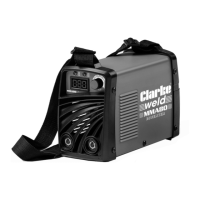
